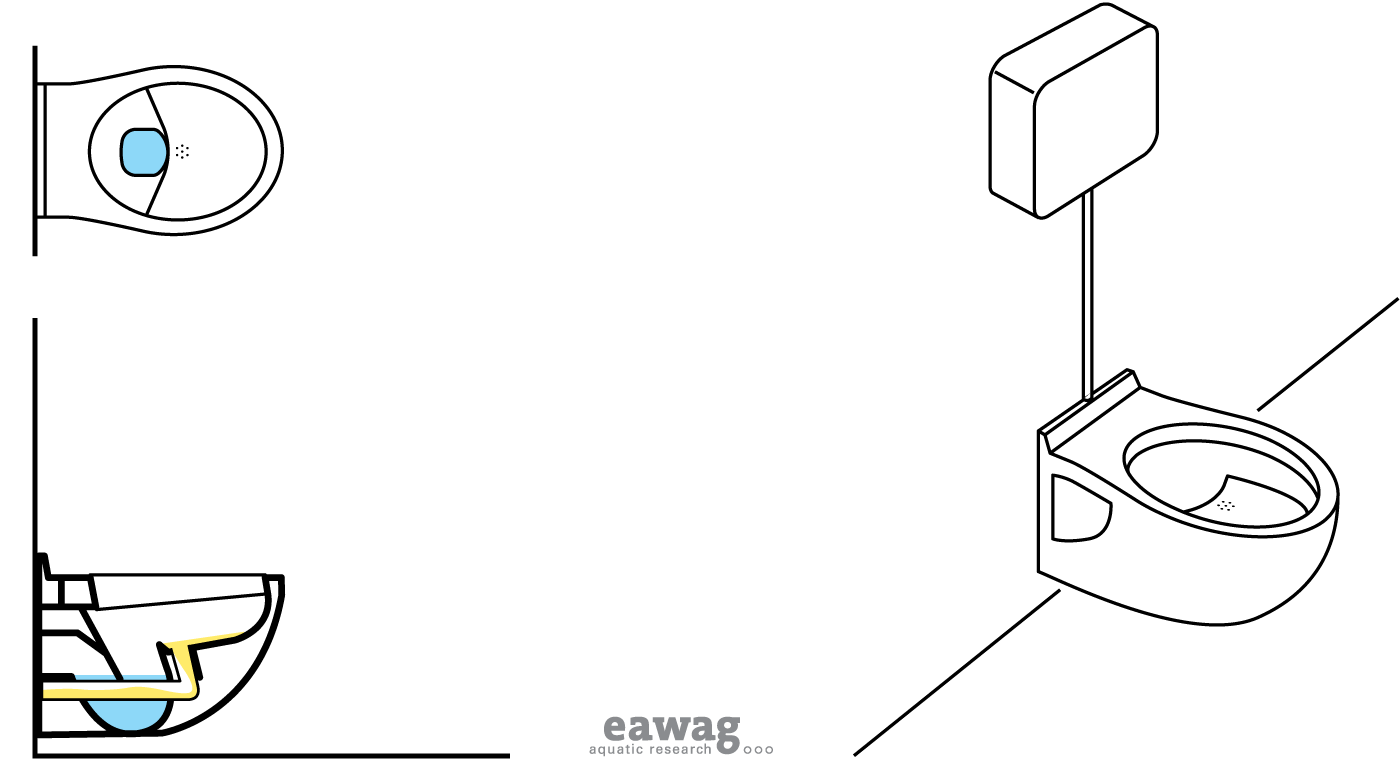Urine Diverting Flush Toilet
<title-small />
The Urine Diverting Flush Toilet (UDFT) is similar in appearance to a Cistern Flush Toilet except for the diversion in the bowl. The toilet bowl has two sections so that the urine can be separated from the faeces. When the user sits on the toilet, urine is collected in a drain in the front (where there is no water) and faeces are collected in the back (where there is water). The urine is collected without water, but a small amount of water is used to rinse the urine-collection bowl after the user stands up. The urine flows into a storage tank for further use or processing, while the faeces are flushed with water to be treated. The system requires dual plumbing (i.e. plumbing for the urine and for the brownwater).
AdequacyThe toilet should be installed carefully with an understanding of how and where clogs may occur so that they can be easily removed. A UDFT is adequate when there is a limited supply of water for flushing, a treatment technology for the brownwater (i.e. faeces, dry cleansing material and flushing water) and a use for the collected urine. To improve diversion efficiency, Urinals for men are recommended. UDFTs are suitable for public and private applications although significant education and awareness is required in public settings to ensure proper use and to minimize clogging. This technology requires dual plumbing (separate for urine and brownwater), which is more complicated than plumbing for Cistern Flush Toilets. Health Aspects/AcceptanceInformation cards and/or diagrams are essential for ensuring proper use and for promoting acceptance; if users understand wh Ythe urine is being separated they will be more willing to use the UDFT properly. Proper plumbing will ensure that there are no odours. MaintenanceAs with any toilet, proper cleaning is important to keep the bowl(s) clean and prevent organic residues and stains from forming. Because urine is collected separately, calcium- and magnesium-based minerals can precipitate out and build up in the fittings and pipes. Washing the bowl with a mild acid and/or hot water can prevent the build-up of mineral deposits; stronger (>24 % acetic) acid or a caustic soda solution (2 parts water to 1 part soda) can be used for removing blockages however, some manual removal may be required periodically. To limit scaling, all connections (pipes) to storage tanks should be kept as short as possible; whenever the Yexist, pipes should be installed with at least a 1 % slope and sharp (90°) angles should be avoided. Larger diameter pipes (75mm for low maintenance and 50mm for higher maintenance) should be used. Manuals, videos and linksReferences
AcknowledgementsThe material on this page was adapted from: Elizabeth Tilley, Lukas Ulrich, Christoph Lüthi, Philippe Reymond and Christian Zurbrügg (2014). Compendium of Sanitation Systems and Technologies, published by Sandec, the Department of Water and Sanitation in Developing Countries of Eawag, the Swiss Federal Institute of Aquatic Science and Technology, Dübendorf, Switzerland. The 2nd edition publication is available in English. French and Spanish are yet to come. |
|||||||||||||||

